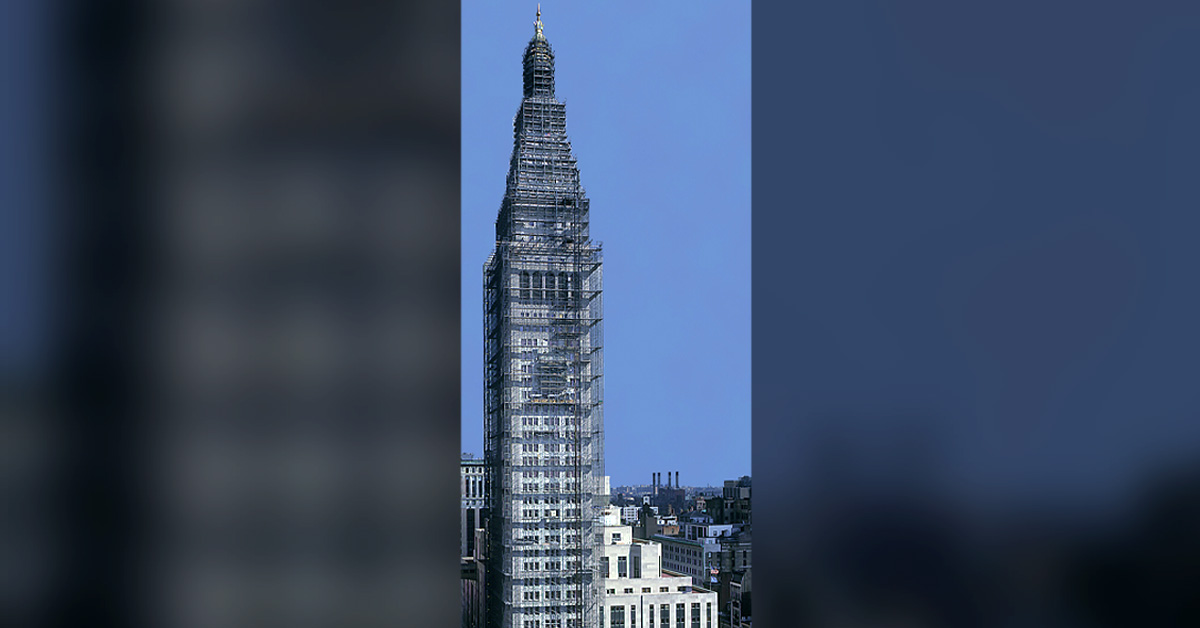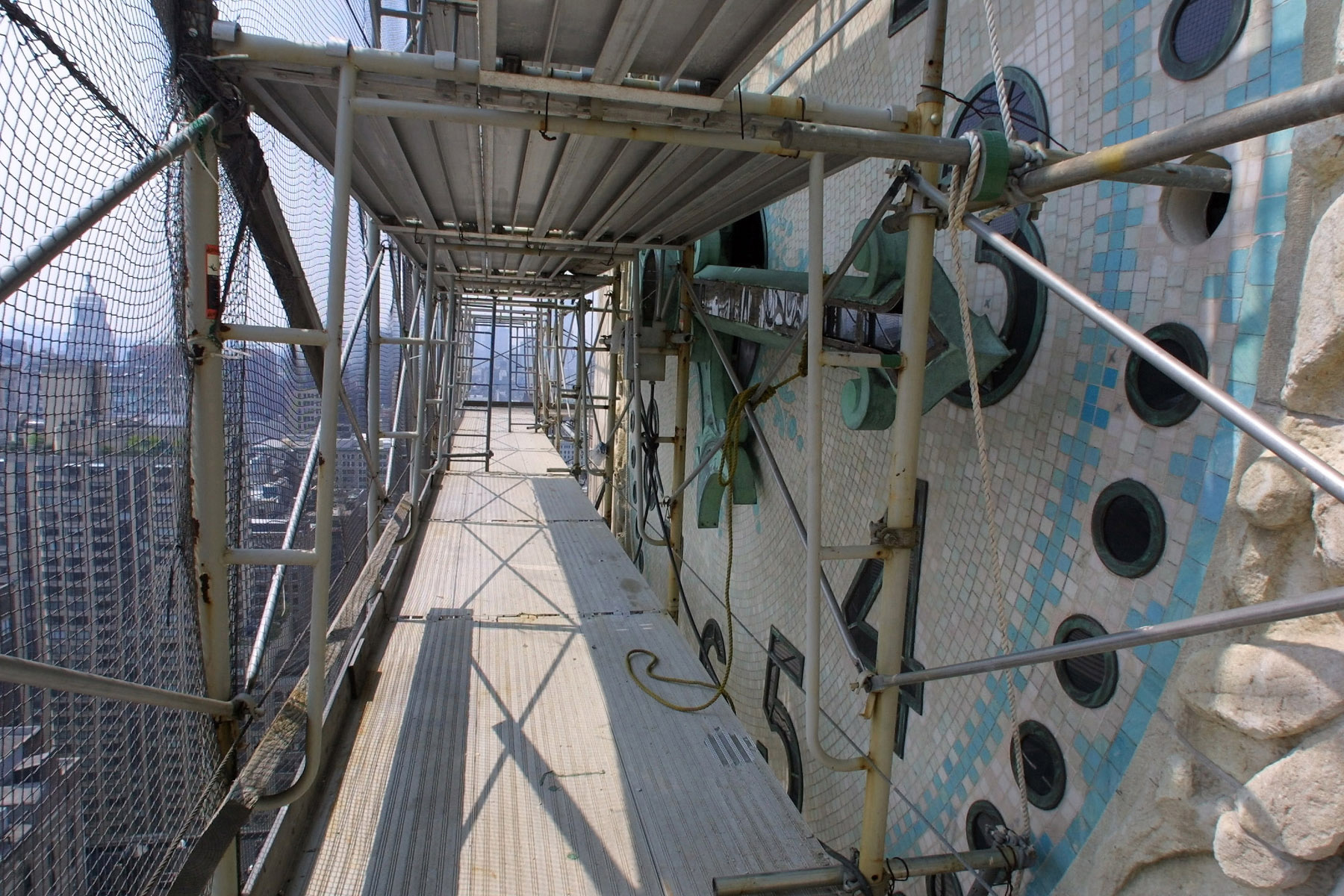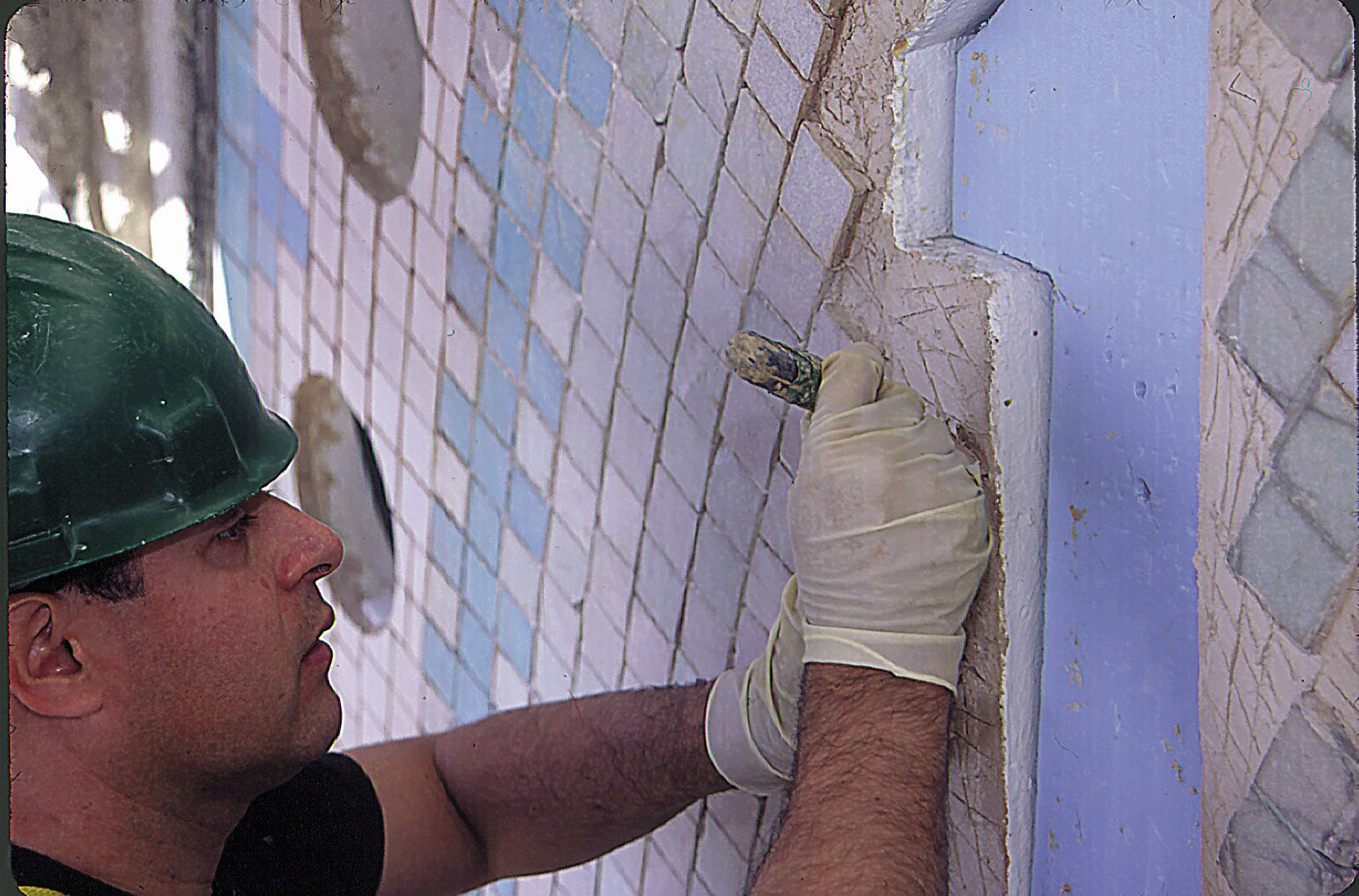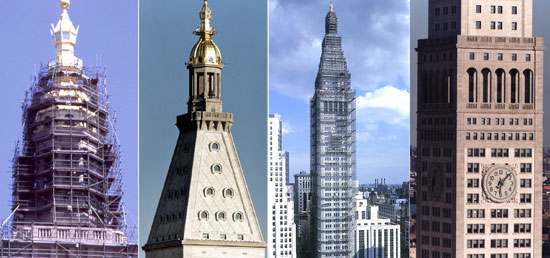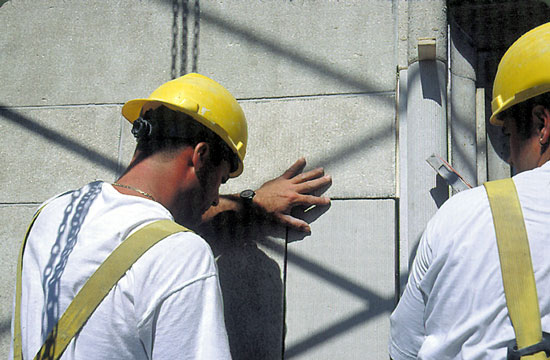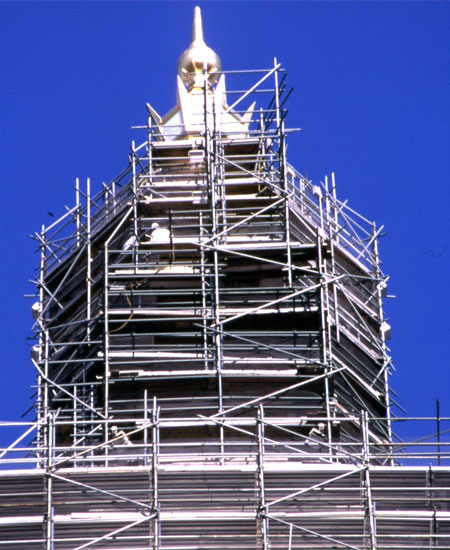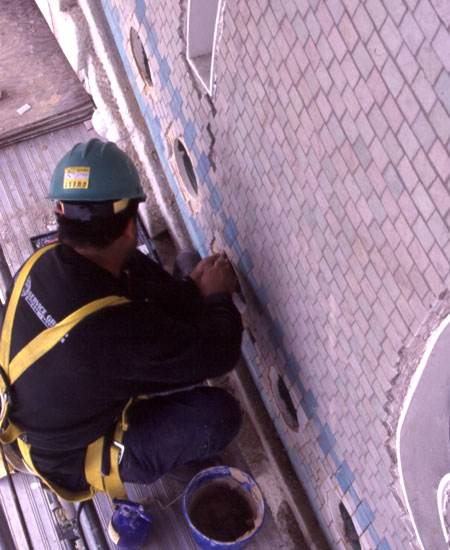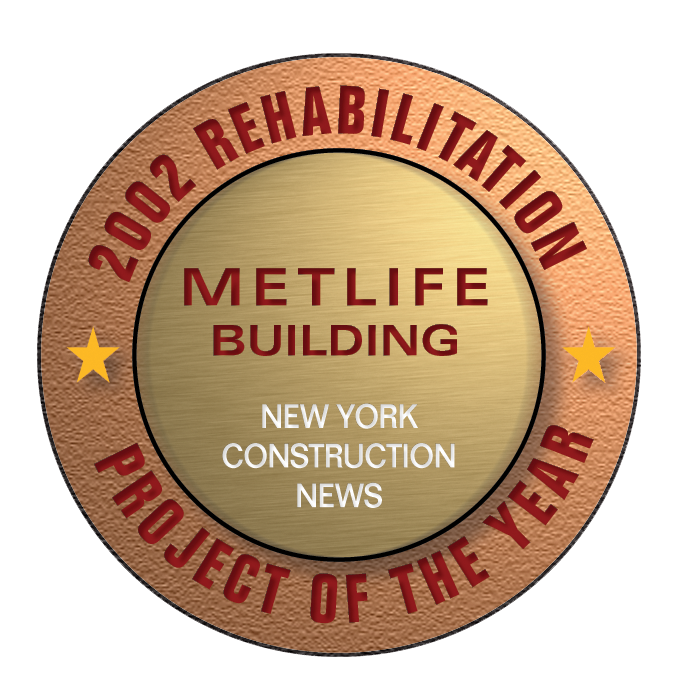The 50-story MetLife Building occupies a full city block in Midtown Manhattan, from Madison to Park Avenues and from 23rd to 24th Streets. The building’s stone clock tower was designed by Napoleon LeBrun and Sons and built between 1906 and 1909. It was closely modeled on the Campanile at the Piazza San Marco in Venice and features a 24-foot diameter face with a glass mosaic tile background on each of its four sides. Each numeral is made of bronze-framed glass, now backlit with new fiber optics.
As masonry contractor for the full-scale restoration of this building, Graciano Corporation: cleaned, pointed, replaced, patched and stabilized both limestone and marble; replaced lintels; and cleaned and reset mosaic tile in the clock faces.
Since the building is a New York City landmark and National Historic Landmark, the restoration project required strict compliance with local, state and federal guidelines for historic preservation.
The building was originally constructed of New York State Tuckahoe marble, which is no longer readily available. During major modernization and repair efforts in the 1960s, some marble was replaced with Alabama limestone in the corners and where cornices were removed. That mix of materials meant that Graciano was required to match many different colors of stone and mortar. Additionally, all work had to be carefully planned not to interfere with daily work at the bustling headquarters of MetLife.
Erecting and dismantling 50 stories of scaffolding is no easy task either. To prevent damage to the building, some stone had to be removed so that the scaffolding and the hoist could be secured to the inner framework of the building. To this end, the New York-based General Contractor, StructureTone and Graciano together reviewed several different scaffolding methodologies and work scenarios to determine the most efficient and effective solution.
Testimonial
Project Manager Stacy Albanese of Building Conservation Associates commented that the project was extremely labor intensive, requiring great attention to detail and the use of techniques that are centuries old. “Graciano’s workmanship was terrific,” she added.
Project Details
Downloads
Project Included
- Water Cleaning
- Unit Stone Replacement
- Structural Steel Repair/Replacement
- Stonework
- Stone Patching
- Stone Facade Pinning
- Sealants
- Repointing Masonry
- Pressure Washing
- Poultices
- Masonry Surface Rehabilitation
- Masonry Cleaning
- Lintel Replacement
- Individual Brick Replacement
- Flashings
- Dutchman Repair
- Chemical Cleaning
- Brickwork
- Alkaline Cleaners
- Acidic Cleaners
- Abrasive Cleaning
Glossary Terms
